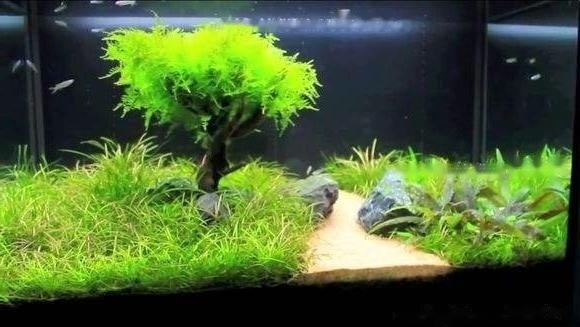
Keeping fish children, the configuration of the fish tank is very important. Planting aquatic plants in the fish tank is also an important part of raising good fish! When burying aquatic plants, it is recommended to disinfect first to avoid bringing bacteria into the aquarium and affecting the health of the fish. A pet editor summarizes the steps for planting aquatic plants, let's learn about it together!
1. The main points of purchasing aquatic plants
1. Equipment configuration requirements
According to Whether there is a need to use an oxygen system, if you do not plan to purchase an oxygen system as an aid for the growth of aquatic plants, you should avoid purchasing some fast-growing aquatic plants, and choose aquatic plants that grow slowly and have low planting needs, such as crown grass, iron Crowns and more.
2. Consider the landscaping effect
The background aquatic plants can be selected as high as water plants; the middle and both sides should be half-height plants, and the foreground should be short plants. Some stem and trailing plants can be purchased. In order to strengthen the theme effect of landscaping, we also purchased a separate aquatic plant with different shapes and colors.
3. Selection of aquatic plants species
(1) Whole aquatic plants: aquatic plants with strong branches, lush leaves, new leaves and deep roots.
(2) Stem aquatic plants: the stems and leaves grow straight, the roots need to grow at the bottom nodes, and those with new buds and identifiable ones are preferred.
(3) Bulb aquatic plants: heavy and heavy, those with dense and sturdy buds that open outside the bulb are preferred.
4. Quantity of aquatic plants purchased
Too few aquatic plants may cause unnecessary algae spread during planting. Compared with thousands of auxiliary equipment, the price of aquatic plants is very low. Therefore, be sure to buy a sufficient number of aquatic plants for planting.
2. Planting steps of aquatic plants
1. Water quality clarification treatment
Before placing aquatic plants, be sure to turn off the power equipment of the fish tank and let the water be quiet Put it aside to make the water quality clarified before planting aquatic plants.
2. Pruning the roots of aquatic plants
First trim the roots of the whole aquatic plants, and cut off the longer roots for the remaining 2~3 cm. The branch-shaped aquatic plants must be cut with a sharp blade or scissors at 2-3 cm below the stem node of the branch, and cannot be broken by hand. The longer the fracture surface, the easier it is to rot.
3. Dig a hole and bury the aquatic plants
First use your fingers or other sticks to make a hole in the sand, then place the root of the plant in the hole, and then put the After the roots are covered with silt, lift them up slightly. In order to ensure that the roots have a certain space in the sediment. You can use tweezers or other tools to assist with planting in places that are out of reach.
4. Add water to remove impurities
After the aquatic plants are planted, remove the remaining branches and leaves on the water surface, turn on the light source, and soon the new branches will take root and grow new leaves. After the impurities in the water have settled, you can put the fish in the aquarium.
3. Attention for selection and planting of aquatic plants
1. Do not buy bright aquatic plants
Many businesses mix terrestrial plants with aquatic plants for sale, although the surface looks like It is very beautiful and bright, but because it is a terrestrial plant after all, it will quickly spoil when placed in the bathtub, which not only affects the water quality and equipment safety, but also has great harm to the growth of fish.
2. Disinfect before entering the tank
When purchasing aquatic plants, choose healthy water leaves that are easier to plant. After purchase, it should be sterilized first. Before planting, classify and deal with them, and remove any rotten and unhealthy stems and leaves.
3. Avoid breaking stems and branches
When planting aquatic plants, do not clip the ends of aquatic plants or break stems and branches, and pay attention not to pollute the water body with sand and stones.
![[Dog Training 5] The training method of pet dog dining etiquette](/static/img/12192/12192_1.jpg)




